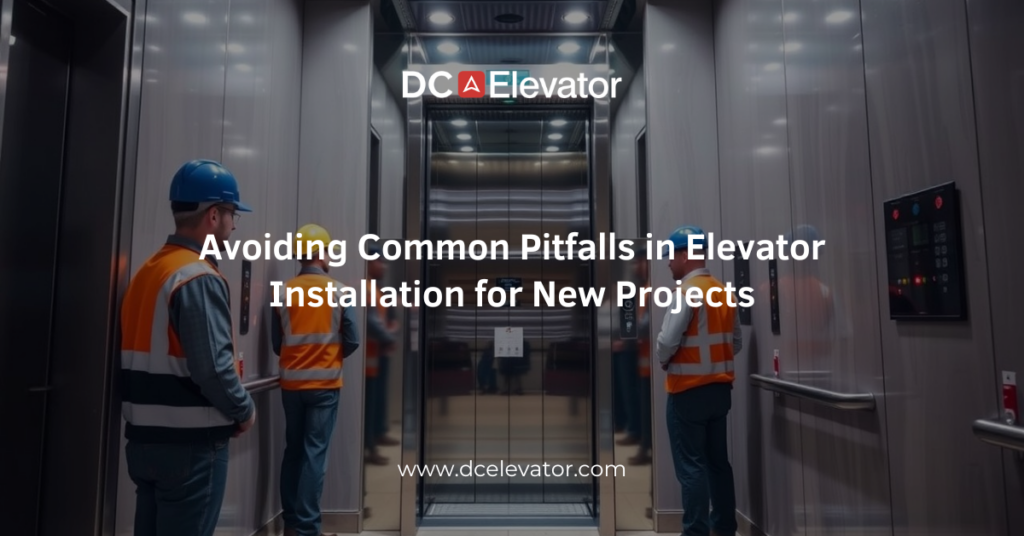Installing an elevator is a critical aspect of any new building project. A well-planned and properly executed installation enhances accessibility, safety, and long-term reliability. However, many property developers and facility managers encounter common pitfalls that lead to delays, increased costs, and performance issues.
Understanding these challenges in advance can save time and money while ensuring a seamless installation. In this blog, we’ll discuss the most frequent mistakes made during elevator installation and how to avoid them, ensuring your project meets safety standards and operational efficiency.
1. Inadequate Planning and Design
One of the most significant mistakes in elevator installation is poor planning. An elevator system must be carefully designed to align with building requirements, expected usage, and industry regulations. Key considerations include:
- Selecting the right type of elevator (hydraulic, traction, or machine-room-less)
- Determining the appropriate weight capacity and speed
- Ensuring compliance with local building codes and safety regulations
Solution: Work with experienced elevator professionals from the beginning to assess building specifications and select the most suitable system.
2. Incorrect Shaft Dimensions and Alignment
Improperly designed elevator shafts can cause significant installation problems. If the shaft is misaligned or doesn’t meet the necessary dimensions, major structural modifications may be required, leading to project delays and additional expenses.
Solution: Perform precise measurements and structural evaluations before construction begins. Coordination between architects, engineers, and elevator contractors is essential to prevent costly mistakes.
3. Overlooking Electrical and Mechanical Requirements
Elevators require specific power supply configurations and control systems. Failing to allocate proper electrical and mechanical resources can cause power failures, operational inefficiencies, and increased maintenance needs.
Solution: Ensure the building’s electrical system is designed to support the elevator’s power requirements. Work with a certified electrician and elevator contractor to confirm proper voltage, backup power options, and control panel placements.
4. Ignoring Safety and Accessibility Regulations
Neglecting safety codes and accessibility guidelines can lead to compliance issues and legal penalties. Requirements such as emergency communication devices, fire-resistant materials, and ADA-compliant features must be integrated into the installation.
Solution: Stay updated on industry standards and regulatory codes. Partner with professionals who specialize in compliance to guarantee that the installation meets all safety and accessibility requirements.
5. Choosing Low-Quality or Mismatched Components
Using substandard materials or components that are not designed for long-term use can result in frequent breakdowns and costly repairs. Some developers may opt for cheaper alternatives, only to face premature wear and tear.
Solution: Invest in high-quality components from reputable manufacturers. Prioritize durability, efficiency, and long-term cost savings over short-term budget reductions.
6. Lack of Coordination Between Contractors
Miscommunication between different teams working on the project—architects, engineers, elevator technicians, and general contractors—can lead to integration issues, delays, and costly rework.
Solution: Establish a clear communication strategy and timeline. Regular meetings and progress reports ensure that all parties stay aligned throughout the project.
7. Skipping Routine Inspections and Testing
After installation, thorough testing and inspections are essential to confirm the elevator operates correctly and safely. Skipping this step can result in hidden defects that compromise passenger safety and system reliability.
Solution: Conduct rigorous testing, including load capacity checks, emergency operation tests, and safety inspections, before the elevator is officially commissioned for use.
Avoiding common pitfalls in elevator installation requires careful planning, expert collaboration, and adherence to industry standards. By addressing these challenges proactively, building owners and developers can ensure a smooth, efficient, and safe installation process.
If you’re planning an elevator installation and want to avoid costly mistakes, our team of experts is here to help. Contact us today to discuss your project and ensure a seamless elevator installation from start to finish.
